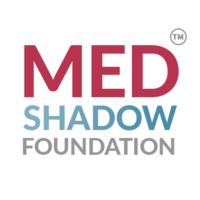Before I hit menopause, I rarely—if ever—took prescription drugs. If I had a bad headache or cramps, I reached for Advil. Extra-strength Tylenol got me through oral surgery. Claritin solved the issues of my occasional springtime allergies. But when I entered menopause at age 52, I was so overcome by the symptoms, I’m not sure I would have survived without Hormone Replacement Therapy (HRT, also called Menopausal Hormone Therapy.)
I experienced my first signs of menopause on a cool spring night four years ago. I was lying in bed, my window open just a crack, when suddenly I awoke drenched in sweat. My body was cold, my sheets were damp, and it felt like all the life had been drained from me. Days earlier, I’d had a hysterectomy, an operation that threw me into menopause quickly, forcefully, almost brutally.
About two months prior, my gynecologist had detected something abnormal during a checkup and encouraged me to have a sonogram. The sonogram discovered a polyp on my cervix; and during a procedure to remove it, I was found to have the early stages of endometrial cancer, a growth of irregular cells in the uterine wall. The discovery was startling in that I’d had no abnormal vaginal bleeding, no spotting, and no other signs of the illness. In fact, I’d felt healthy and was getting regular periods. In my mind, the onset of menopause was still years away. All that changed, however, when I underwent a hysterectomy in May 2009 to stop the spread of the cancer. As a precaution, both my uterus and ovaries were removed, so my body stopped producing estrogen and progesterone, my periods ceased, and my hormone levels dropped quickly.
Hot Flashes and Night Sweats: Signs of the Menopausal Transition
While some women ease into menopause over the course of months or even years—in a phase known as perimenopause—because of my surgery, my transition was sudden, ushering in symptoms with a vengeance.
Aside from experiencing regular night sweats, which interrupted my sleep and caused me to feel foggy the next day; I had frequent hot flashes, which felt as if combustible gases burned inside me. There were also eruptive mood swings that had me sobbing uncontrollably and feeling rageful, fluctuations that frankly frightened my then 10-year-old daughter.
Martha Hickey, MD, Chair of the Obstetrics and Gynecology Department at the University of Melbourne in Australia, says that her research suggests that when women are thrust into menopause by cancer treatment, “the hot flushes and sweats that women experience seem to be more severe than those in the general population.”
She explains that for most women, even those not medically induced into menopause, the hallmark symptoms of the menopausal transition are hot flashes and night sweats. While these symptoms can occasionally be linked to other conditions, Dr. Hickey emphasizes, “If you are having hot flashes and you are around the age of menopause, then it’s menopause.”
However, Dr. Hickey does note that women of color and those who live outside of the U.S. and Australia may experience bone and joint pain more often than hot flashes.
How I Treated My Menopausal Hot Flashes and Night Sweats
At first, my doctor suggested I try a natural supplement called Estroven Maximum Strength to help relieve the symptoms. These over-the-counter tablets, taken once or twice daily, contain ingredients such as black cohosh, soy isoflavones, magnolia bark, and vitamin D, which are meant to reduce hot flashes, night sweats, and irritability. Since my inclination was to avoid prescription drugs altogether—including HRT—I was willing to try Estroven for several months.
I supplemented the tablets with a few acupuncture sessions, and switched from coffee to green tea. (Known for its antioxidant and therapeutic properties, green tea contains far less caffeine than coffee, which was making me more irritable.) But as the summer wore on, my symptoms didn’t let up.
In September 2009, about four months after the surgery, I was walking to my doctor’s office in Manhattan for a follow-up visit. As I pushed through the crowded sidewalks, I felt a certain hormone-fueled rage come over me. Suddenly, I wanted to shove the other pedestrians into oncoming traffic. When I arrived at the office and told my doctor of my experience, she grew concerned and advised that it was perhaps time to move on to something stronger. She prescribed a low dose of Premarin, an estrogen-based HRT, that has been known to reduce night sweats, hot flashes, and hormonal mood swings in women.
My Experience with Premarin
Premarin comes in five oral doses, ranging from .3 mg to 1.25 mg per tablet. My doctor and I decided I would start on the lowest dose—3 mg—to see whether I would feel an improvement. On the market since 1942, Premarin is classified as a conjugated equine estrogen, meaning it is made up only of estrogen.
After weighing the pros and cons, I decided to start on the Premarin right away. Within days, I began to feel much better. My moods stabilized almost immediately, and within weeks the night sweats and hot flashes largely went away. Furthermore, I felt no side effects from the drugs, which, for some women, include stomach upsets, nausea, weight gain, headaches, bloating, and tenderness of the breasts, among others.
It’s been more than four years since I’ve been on Premarin, and in some ways, it’s been a lifesaver. From the time I got my period at age 10 and half until the time I went into menopause at age 52, I was a prisoner of premenstrual syndrome, hormonal fluctuations, and mood swings. Now, for the most part, my moods are stable. I’m also not troubled by night sweats, hot flashes, vaginal dryness or burning, or any of the other physically uncomfortable aspects of menopause.
That said, I’ve been diligent about seeing my oncologist every six months and my internist at least every 12 months for checkups. I also make sure to get an annual mammogram to check for breast cancer. What’s more, I’ve stayed on the .3 mg dose of Premarin, with continued good results.
It’s hard to say when—and why—I might stop taking the drug. And it’s possible I may try to cut back on the amount I use and consider alternative therapies down the road. (Over the years I’ve seen both a Chinese herbalist and acupuncturist who believe they can help with menopausal symptoms.) But at least for now, I feel that the benefits of Premarin outweigh the risks. So even though I’m not a big proponent of prescription drugs—unless absolutely necessary—for the foreseeable future, I plan to make no changes.
Types of Hormone Replacement Therapy
HRT comes in a variety of forms, including pills, gels, creams, injections and patches. Depending on a person’s health history, a doctor may recommend therapies that contain a form of estrogen, or a combination of estrogen and progestin. HRT can help with hot flashes and night sweats, explains Dr. Hickey, “but it does not resolve all of the things that happen [during the menopausal transition]. And I think it’s quite an important message here, that the ovaries are a very sophisticated organ, perhaps the most sophisticated endocrine organ, and that you can’t remove them and then just put in a bit of hormones and expect everything to be as it was.”
According to Dr. Hickey,“the main risk for those who take combined hormone therapy is a higher risk of breast cancer.” However, the debate around this risk continues, with some experts arguing it has been overstated, and others noting that the improvement in overall health outweighs the slightly elevated risk for many, if not all, patients.
An additional side effect, explains Dr. Hickey, is irregular menstrual bleeding, which she says can be a nuisance and potentially lead the women to get unnecessary tests for other conditions such as endometrial cancer.
How to Decide If Hormone Replacement Therapy is Right for You
The National Institute for Health and Care Excellence (NICE) released guidelines for identifying and managing menopause in November 2024. Those guidelines emphasize HRT as a frontline therapy for most women, though Dr. Hickey points out that there are alternatives such as cognitive behavioral therapy (CBT) or antidepressant medications for those who can’t or don’t want to take MHT.
There is also a nonhormonal drug called Veozah, which the U.S. Food and Drug Administration (FDA) approved to treat hot flashes in May 2023.
For the first time, the NICE guidelines also contain a discussion aid. The tool helps women evaluate their individual risk of different conditions such as breast cancer or cardiovascular disease depending on their age and the amount of time they take or don’t take HRT. The aid is designed to help facilitate a conversation about the risks and benefits of HRT with your healthcare provider.
This article was originally published in June 2019. It was updated in November 2024.






